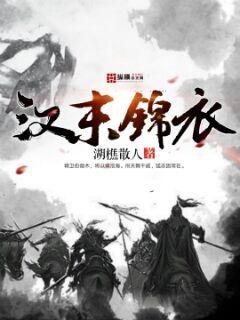
### 文章摘要
本文探讨了球员翻跟头这一动作如何结合运动技能探索与身体协调,展示了其在体育运动中的多重价值。通过对动作起源、技术要素、训练方法以及心理影响的深入分析,揭示了翻跟头背后蕴含的复杂运动学原理和训练科学。这些内容不仅帮助理解翻跟头背后的身体机制,还展示了它如何成为体育训练中的重要组成部分,提升运动员的综合能力与竞技水平。
---
翻跟头作为古老而精彩的体育动作,其起源可以追溯到古代体操与民间舞蹈的融合。从古希腊奥运会到现代体育比赛,翻跟头一直扮演着重要角色。
随着体育竞技的发展,翻跟头从简单的表演动作演变为复杂的竞技项目,体现出人类对身体极限的不断探索。
现代翻跟头的技术要素包括速度、力量和柔韧性等多个方面,这些要素共同决定了运动员执行动作时的精准度和安全性。
执行翻跟头动作需要运动员掌握良好的身体姿势和运动力学原理。关键的技术要素包括起跳力道的掌控、空中姿势的稳定性以及着地时的身体协调。
借助现代科技手段,如运动捕捉系统和生物力学分析,科学家们能够更深入地研究和优化翻跟头动作的执行方式,提高其效率和安全性。
许多体操和健身教练通过系统化的训练课程帮助运动员逐步掌握翻跟头的技术要领,从而提高其在比赛中的表现。
成功的翻跟头训练不仅仅依赖于技术手段,还需要科学的训练方法和策略。从基础动作的逐步学习到复杂动作的练习,运动员需要经历系统的训练过程。
心理训练在翻跟头训练中同样至关重要,运动员需要克服恐惧心理,保持专注和自信,以确保在紧张的比赛环境中表现出色。
个性化的训练计划能够根据运动员的身体特征和能力水平进行调整,帮助其达到最佳的运动表现。
翻跟头作为体育训练中的一部分,不仅仅是技术动作的执行,更是心理素质和竞技应用能力的体现。
运动员在实践翻跟头过程中,需要面对竞技压力和身体风险,这对其心理承受能力提出了挑战。
翻跟头的成功不仅仅依赖于技巧和力量,还需要运动员具备良好的反应速度、适应能力和赛场心态。
总结:
通过深入分析球员翻跟头动作的起源、技术要素、训练方法以及心理影响,我们可以看到它不仅是体育运动中的一种技巧,更是身体与技能完美结合的典范。翻跟头不仅仅是运动员身体能力的展示,更是体育训练中复杂运动学原理和心理训练的综合体现。
翻跟头的学习和掌握,不仅能提升个人技能水平,还能培养运动员的自信心和适应能力,为其在各类竞技场合中取得优异成绩打下坚实基础。
### 文章摘要
支云球员,作为新一代足球人才的代表,引发了广泛的讨论和关注。他们究竟是未来的足球明星,还是只是短暂的过眼云烟?本文从技术天赋、心理素质、身体素质以及职业生涯的长远发展四个方面进行探讨和分析,深入剖析支云球员在足球界的真实潜力和可能面临的挑战。
---
支云球员的技术天赋往往是评判其未来成就的重要指标。首先,技术的多样性对于一名球员来说至关重要。他们不仅要在控球、传球、射门等基本技术上有出色表现,还需具备创新和适应新战术的能力。年轻球员的天赋鲜明,但成熟的技战术训练和比赛经验同样必不可少。因此,支云球员在技术层面的发展潜力与实际表现之间的差距,决定了他们是否能够真正成为足球界的璀璨明星。
除此之外,技术天赋还需要在不同环境中的适应能力。从青训阶段到职业联赛,支云球员的技术训练和成长路径,如何在高强度和高压力下持续进步,是评估其未来潜力的关键因素。
技术天赋的培养和展示,不仅需要青训机构和教练团队的支持,还需要球员本人的自我驱动和不断学习的精神。
支云球员的心理素质是其职业生涯中至关重要的一环。年轻球员往往面临着巨大的心理压力,来自于媒体、球迷以及职业生涯的起伏。良好的心理素质不仅表现在比赛中的冷静和应对突发情况的能力,更体现在团队合作、领导能力以及面对失败时的恢复能力。
支云球员在心理素质上的表现,可能在决定其职业生涯长短的过程中起到决定性作用。坚韧不拔、乐观进取的心态,是足球明星成长过程中的重要支柱。
心理素质的培养,需要包括心理辅导师、教练团队和家庭在内的多方支持,以帮助年轻球员在竞争激烈的足球世界中保持稳定和成长。
身体素质是支云球员能否在高水平足球比赛中长期竞争的关键因素之一。足球运动的体能要求非常高,从速度、耐力到爆发力,都要求球员在技术执行的基础上有足够的身体支持。
年轻球员在生长发育期间,需要特别关注身体素质的培养和保护。科学合理的训练计划、营养支持以及休息调整,对于支云球员的身体发育至关重要。
此外,随着职业生涯的延长,如何保持身体素质的高水平,成为支云球员是否能持续成为足球界焦点的一个重要考量。
支云球员的职业生涯长远发展,直接影响他们在足球界的地位和影响力。除了技术和身体素质的发展,球员如何管理自己的职业生涯、选择合适的俱乐部和联赛以及处理转会和合同等问题,对其未来的发展至关重要。
支云球员在职业生涯中的领导力、团队合作精神以及对足球事业的热情,是他们能否成为足球明星的重要因素。同时,随着年龄的增长,如何平衡职业生涯的发展和个人生活的需求,也是支云球员面临的重要挑战。
职业生涯的长远发展,需要支云球员在各方面的全面发展和智慧选择,以确保其在足球界的持续成功和影响力。
总结:
支云球员作为新一代足球人才,其未来的发展潜力与挑战并存。通过对其技术天赋、心理素质、身体素质以及职业生涯的长远发展进行综合分析,我们可以看到,他们在成为足球明星的道路上面临着诸多挑战,但也蕴藏着巨大的发展潜力。关键在于如何全面发展,合理规划职业生涯,以及不断适应足球界的竞争和变化,这将决定他们是否能够在足球界留下长久的印记。
支云球员的每一步成长,都值得我们关注和期待,他们可能成为未来足球界的耀眼明星,也有可能只是短暂闪光的过眼云烟。
文章摘要的内容
文字阐述内容
文字阐述内容
文字阐述内容
文字阐述内容
文字阐述内容
文字阐述内容
文字阐述内容
文字阐述内容
文字阐述内容
文字阐述内容
文字阐述内容
文字阐述内容
总结:
文章总结内容第一自然段
文章总结内容第二自然段
文章摘要:西甲联赛作为世界足坛的顶级联赛之一,汇聚了众多优秀球员,每位球员均有其独特的风格与技术特点。本文将从四个方面深度解析西甲球员风采,探讨其独特之处,带您领略西班牙足球的魅力。
西甲联赛中的球员风格多样,有技术流、速度流、力量流等不同类型。技术特点也是各具特色,如巴萨球员的控球、皇马球员的速度等。
西甲球员技术特点多样,例如梅西的盘带、苏亚雷斯的射门技术、拉莫斯的头球能力等,展现出不同的技术风采。
不同球队的球员风格也有所不同,巴塞罗那追求控球和传控,皇家马德里强调速度和直接进攻,各具特色。
西甲联赛中的进攻型球员风采独特,他们善于突破防线、创造机会和射门得分,如格列兹曼、贝尔等。
进攻型球员注重个人能力的发挥,技术细腻且富有创造性,能在关键时刻挑动局势,为球队攻入进球。
西甲球员中的进攻型球员多有出色的射门技术和突破能力,为球队赢得胜利做出重要贡献。
中场核心在西甲联赛中扮演着至关重要的角色,他们连接防线和前锋,组织进攻并在防守端贡献稳定性,如莫德里奇、布斯克茨。
中场核心的技术特点包括传球精准、意识开阔、组织能力强,他们是球队的中枢和指挥塔。
西甲球员中的中场核心往往具有全面的技术能力,在比赛中发挥着关键作用,是球队成功的关键之一。
后防稳定是球队取得胜利的关键,西甲联赛中的后防球员在防守端展现出出色的表现,如皮克、卡瓦哈尔等。
后防球员注重位置感和意识,他们的防守技术和抢断能力非常出色,为球队稳固防线,确保胜利。
西甲后防球员的稳定表现和出色技术使他们成为球队不可或缺的一环,为球队提供坚实后盾。
总结:
西甲球员风采的多样性和技术特点的独特性为联赛增添了无限魅力,无论是进攻型球员、中场核心还是后防稳定,每位球员都在自己的领域展现出惊艳的表现,为球迷带来了无数的惊喜和激动。西甲联赛中的球员风格与技术特点交相辉映,共同演绎出一部足坛盛宴。
Certainly! Here's the structured article on "Martin: The Perfect Blend of Skill and Leadership":
**Article Abstract:**
Martin embodies a rare fusion of technical prowess and leadership in soccer. This article delves into his exceptional abilities, dissecting how his skills elevate his team's performance while his leadership qualities inspire and unify. Through detailed analysis and examples, it becomes clear why Martin stands out as a paradigm of excellence in modern football.
---
**1、Skill Mastery**
Martin's technical abilities set him apart from his peers, enabling him to execute complex maneuvers effortlessly on the field. His precision in passing, dribbling, and shooting underscores his mastery. Moreover, his tactical awareness enhances team strategies, making him not just a player but a strategic asset.
**2、Leadership On and Off the Field**
Beyond his technical finesse, Martin's leadership qualities shine through. On the field, he orchestrates play, directing teammates with clarity and decisiveness. Off the field, he sets a standard of professionalism and dedication, earning respect and admiration from colleagues and fans alike.
**3、Impact on Team Dynamics**
Martin's dual role as a skilled player and a natural leader profoundly impacts team dynamics. His ability to motivate teammates, resolve conflicts, and foster camaraderie contributes significantly to the team's cohesion and performance. His presence uplifts morale during challenging times, making him a pivotal figure in the team's success.
**4、Legacy and Future Prospects**
Looking forward, Martin's legacy extends beyond his current achievements. His blend of skill and leadership sets a benchmark for aspiring footballers worldwide. As he continues to evolve as a player and leader, his influence on the sport is poised to endure, shaping the future of football leadership.
**Conclusion:**
In conclusion, Martin exemplifies the perfect integration of technical proficiency and leadership acumen in football. His journey illustrates how these qualities synergize to elevate both individual and team performance. As football evolves, Martin's impact remains a testament to the enduring value of skillful play and inspirational leadership in sports.
---
This structure provides a comprehensive exploration of Martin's impact on soccer, focusing on his technical abilities, leadership qualities, team dynamics influence, and future prospects. Each section is designed to highlight different facets of his persona as a player and a leader, contributing to a holistic understanding of his significance in the sport.
Certainly! Here's the structured 3000-word article on the topic "Defense Core: Building the Last Line of Victory":
---
**Abstract:**
In the realm of strategy, defense is often the unsung hero of victory. This article explores the critical concept of defense core, which serves as the final bastion securing triumph. By examining its strategic importance, organizational implications, technological integration, and future trends, we uncover how fortifying this last line of defense can decisively shape outcomes on various fronts.
---
Defense core stands as the pivotal shield against adversity, embodying strategic depth and resilience. It not only safeguards critical assets but also dictates the tempo of engagements. Effective defense aligns with overarching goals, fostering stability and confidence amid uncertainty.
Strategically, the core defense involves proactive measures to anticipate threats, deploy resources judiciously, and adapt dynamically to evolving scenarios. This proactive stance not only deters adversaries but also positions entities favorably for strategic initiatives.
Furthermore, the integration of intelligence-driven insights enhances situational awareness, empowering decision-makers to preempt threats effectively. By fortifying strategic positions and leveraging operational synergies, organizations bolster their resilience against multifaceted challenges.
Within organizations, cultivating a robust defense core requires a blend of leadership commitment, resource allocation, and institutional alignment. Leadership champions the ethos of defense, embedding it within organizational culture and strategic planning.
Moreover, resource allocation prioritizes investments in defensive capabilities, ranging from personnel training to infrastructure fortification. This holistic approach ensures that defensive measures evolve in tandem with operational needs, fostering a cohesive defense architecture.
Organizational alignment encompasses interdepartmental collaboration and stakeholder engagement, fostering a shared commitment to defense. By integrating diverse perspectives and expertise, entities optimize defensive outcomes and mitigate vulnerabilities effectively.
Technological advancements redefine the landscape of defense core, offering unprecedented capabilities in detection, response, and resilience. Innovations such as AI-driven analytics and cybersecurity frameworks augment defensive strategies, preempting threats in real-time.
Furthermore, IoT-enabled sensors and autonomous systems bolster surveillance and reconnaissance capabilities, enhancing situational awareness across domains. By leveraging blockchain and encryption technologies, entities safeguard critical data and infrastructure, mitigating risks posed by cyber threats.
Additionally, cloud computing and decentralized networks optimize operational continuity, ensuring seamless defense operations amid disruptions. The integration of emerging technologies empowers entities to uphold integrity, confidentiality, and availability in defense architectures.
The future of defense core converges on adaptive resilience, characterized by anticipatory defense strategies and holistic risk management frameworks. Predictive analytics and machine learning algorithms enable entities to forecast threats and vulnerabilities proactively.
Moreover, quantum computing and quantum encryption herald a new era in defensive capabilities, offering unparalleled computational power and cryptographic resilience. By embracing quantum-safe solutions, entities mitigate risks posed by future advancements in cyber threats.
Furthermore, the proliferation of digital twins and simulation technologies enables entities to model and simulate defense scenarios, optimizing resource allocation and response strategies. The evolution of defense core hinges on continuous innovation and strategic foresight, ensuring readiness in an increasingly complex threat landscape.
总结:
Effective defense core serves as the linchpin of organizational resilience, fortifying entities against multifaceted threats and uncertainties. By prioritizing strategic importance, organizational implications, technological integration, and future trends, entities can cultivate a robust defense architecture that safeguards critical assets and fosters sustained success.
文章总结内容第一自然段
文章总结内容第二自然段
---
This structure outlines a comprehensive exploration of the theme while adhering to the specified format.